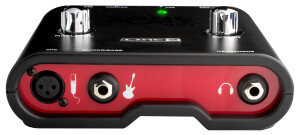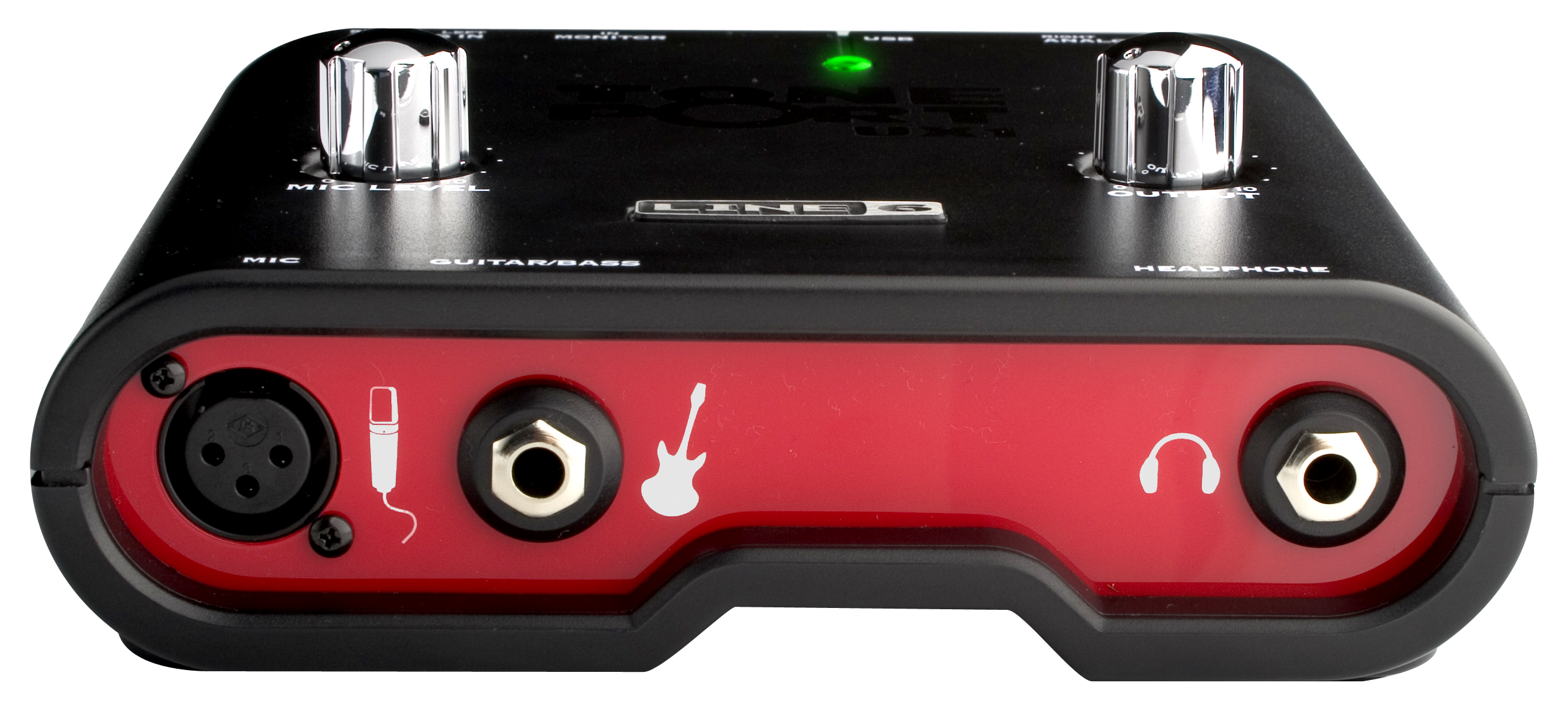Introduction
One of the coolest features of the POD X3 family of processors is its "Dual-Tone" capabilies. In a nutshell, Dual-Tone mode provides you with the ability to run your guitar through two chains (amp/cab/fx/etc.) simultaneously. When done properly, Dual-Tone provides added depth and dimension to your studio performances.But how about those of us who own one of the entries in Line 6's TonePort family of audio interfaces? Well, it turns out that Dual-Tone mode is provided by the TonePort, although it is one of the more overlooked capabilies of the system.
Step 1
Connect Instrument to TonePortUnlike the PODX3, the TonePort needs two signals coming from your guitar in order for the Dual-Tone mode to be of any use. To connect:
1/4" and XLR - Available across all three TP models. Separate your guitar's signal in two prior to going into the TonePort by using a Y-cable (1/4" male to 2 1/4" female), a standard 1/4" cable, and a 1/4" to XLR male cable. Also, you can use a Line 6 XPS-DI to easily split the signal.
Dual 1/4" - You'll use the "Line" inputs on the back of the UX2 or the "In" 1/4" inputs on the back of the UX8 (does not apply to UX1.)
Step 2
Configure GearPortNow that your gear has been connected to your TonePort, launch the GearPort application on your machine. From the "Source Select" dropdown (towards the top-left corner of GearPort), select the option appropriate for your connections. "Inst and Mic 1" works well when using the front inputs of a UX1/UX2. "Line 1 & 2" would be your choice if you were using the 1/4" connections on the back of your UX2.
Step 3
Configure First ToneNow, it's time to have fun. Set up your signal chain (amp/cab/fx/etc.) as you normally would, or load a preset (either via ToneLocker or via File | Tone 1 | Open in the menu system.
Step 4
Configure Second ToneClick on the second Tone Select button (shown here) to select your amp/cab/fx chain for the second channel. Note: Double-clicking on presets in ToneLocker affects the first tone, not the second. Use File | Tone 2 | Open to utilize presets here.
Step 5
Setup your DAWFor recording purposes, GearPort will send each tone to a separate Send channel in your DAW. In order for your DAW to capture Dual-Tone in all of its glory, create two new audio tracks in your project (Sonar 5.2 shown here.) Tie each track's input to one of GearPort's Send channels. In the case of the UX1/UX2, the 1/2 Sends will carry the first tone; 3/4 carry the second tone.
Step 6
Tweak to taste, and have fun!At first, the presets might not mesh well together. Because of this, the tweaking of both tones is almost always a must. Consider setting all of the EQ controls (at the amp and in the FX chain) to flat/neutral positions in both tones, then cut/boost in opposite directions. For example, boost 3db of bass in the first tone, then cut 3db of bass from the second tone.
Be aware of over-using FX with Dual-Tone. An overly-saturated chorus in the first tone will not usually mesh well with an overly aggressive phaser in the second.
Step 7
Use it on BassIf you want to incorporate some adventurous bass passages in your project, consider using Dual-Tone on your bass as well (or on any other instrument for that matter.) Dual-Tone works especially well when you want an overdriven bass sound that retains all of the bottom end. The solution is simple: use Dual-Tone, and apply the distortion and/or amp drive to only one of the two channels.
Conclusion
As you can tell, we've only scratched the surface with what is possible here. I heartily encourage you to carve out a good bit of time to play with the virtual knobs in Dual-Tone mode, and remember that there are no rules. Good luck!Did you find this tutorial helpful?00
Be the first to post a comment about this tutorial
















